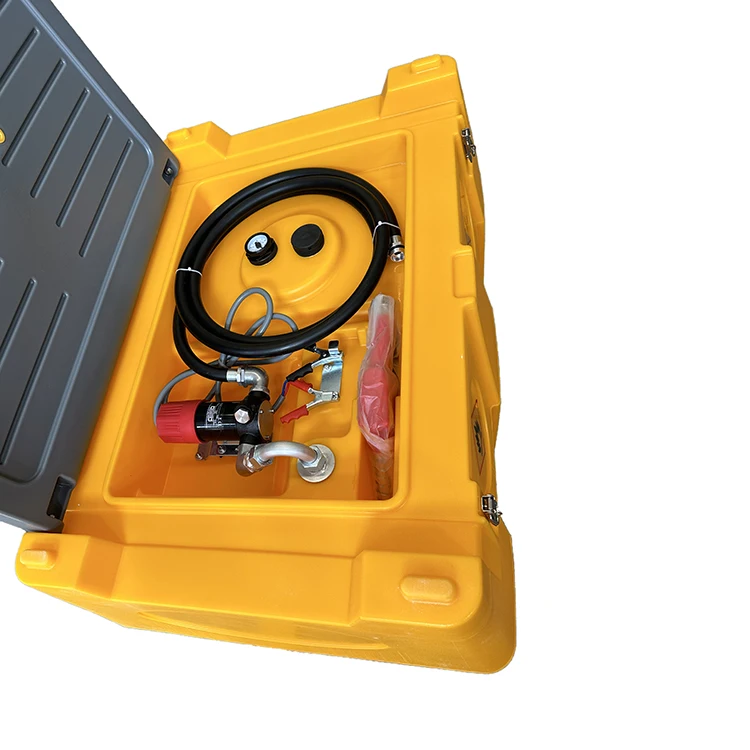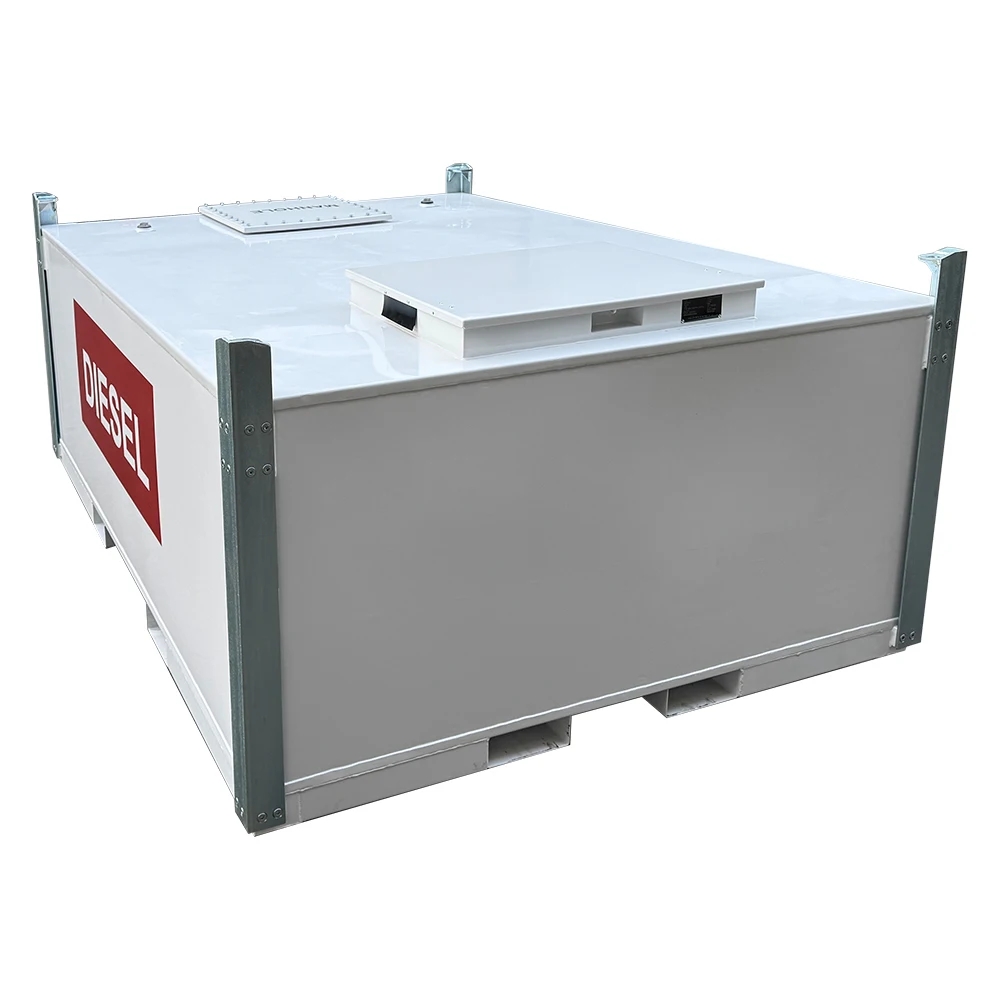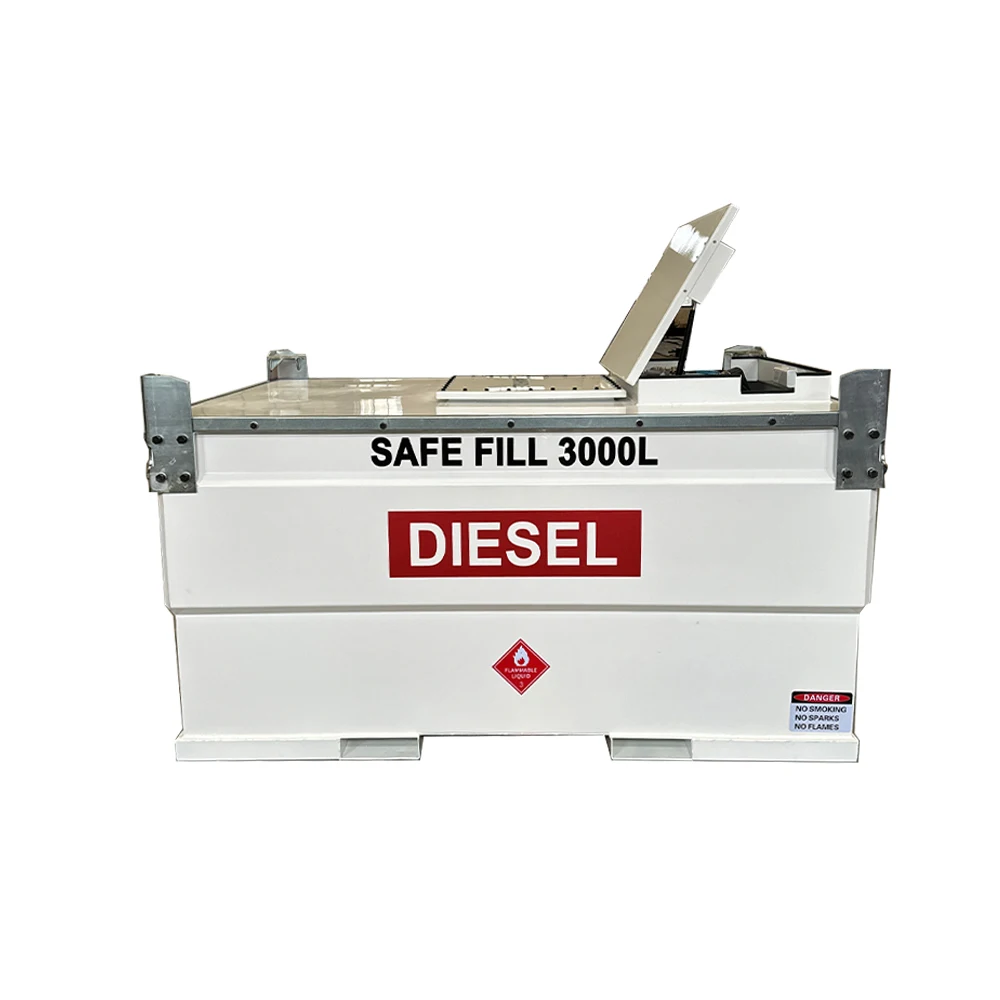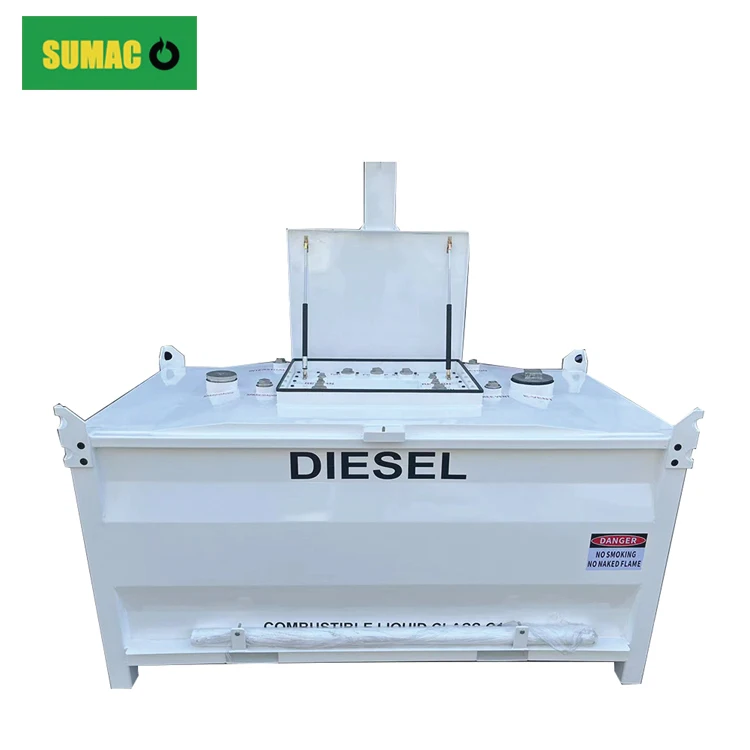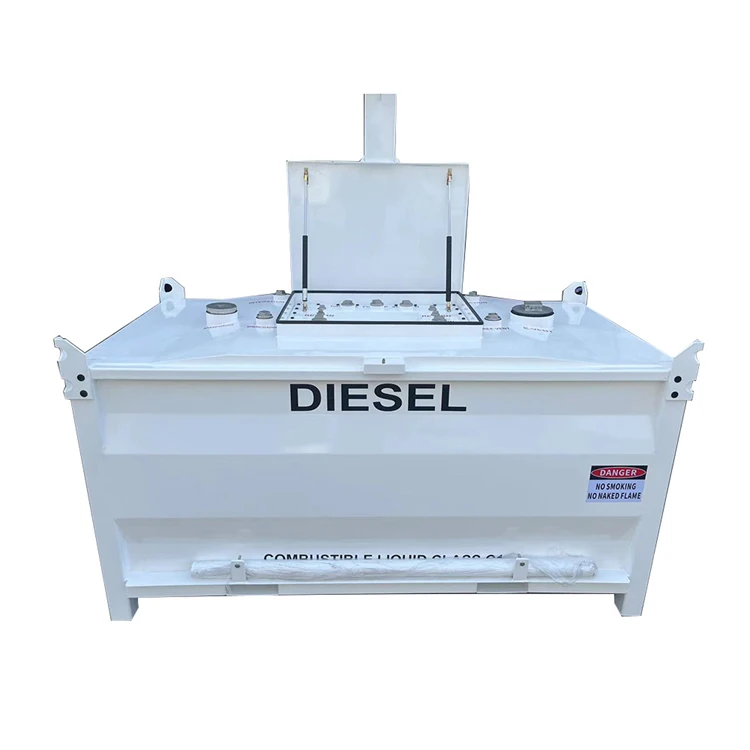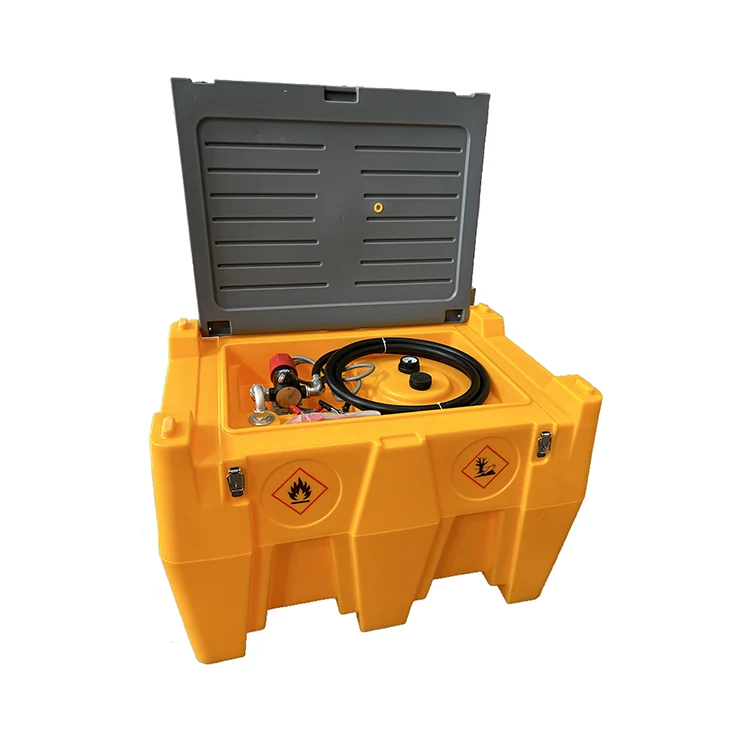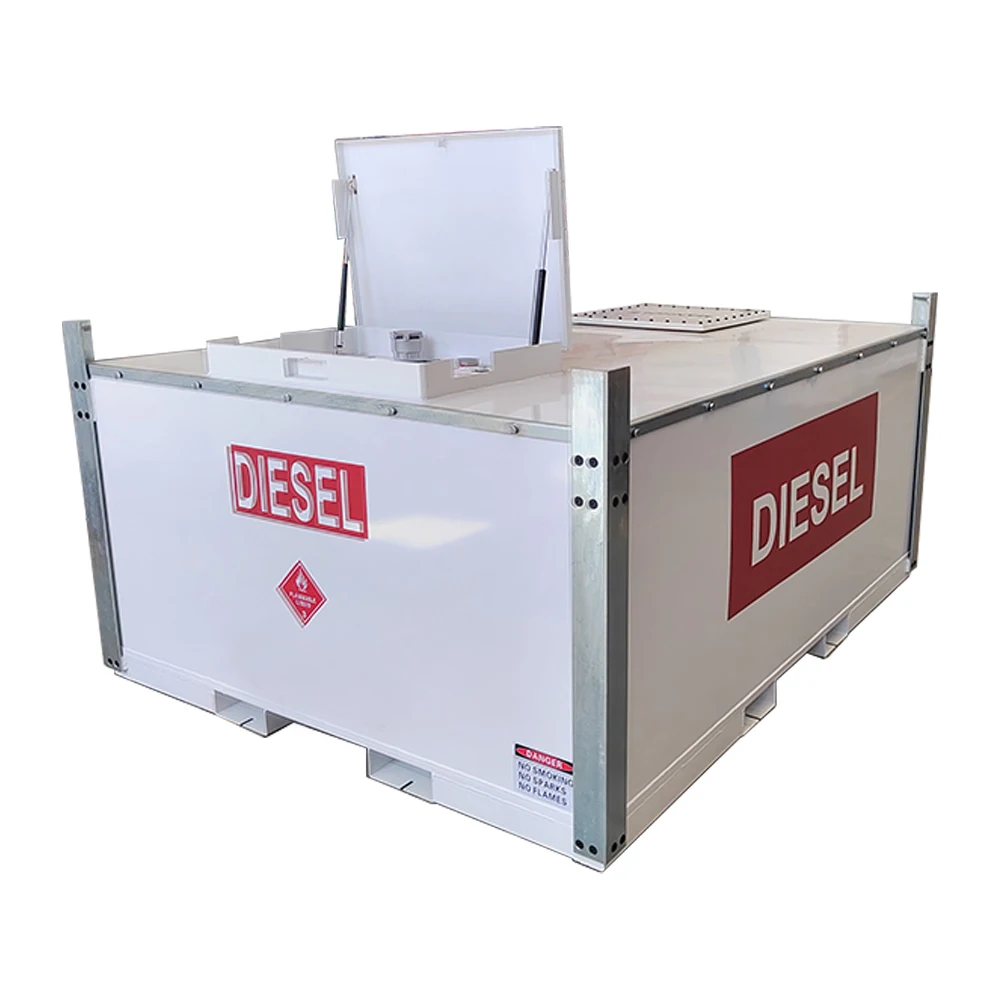Portable diesel fuel cube tank sale for Canada
When using the Fuel cube tank, there are many key points that need to be strictly followed to ensure safe and efficient operation.
1. Installation site selection
Preferably choose a location away from fire sources, heat sources and crowded areas, such as boiler rooms, residential buildings, etc. The site selection ground should be solid and flat to prevent the tank from tilting and settling. At the same time, consider the smooth drainage of the surrounding area to avoid water erosion of the tank. The installation process should be strictly operated in accordance with the instructions to ensure that all components are firmly connected to prevent leakage.
2. Oil product adaptation
Clearly specify the oil products suitable for the fuel tank design, such as diesel, gasoline, etc., and do not mix different types of fuel. Mixing may cause chemical reactions, corrode the tank, and affect the quality of the fuel, causing equipment failure. At the same time, pay attention to the cleanliness of the fuel to prevent fuel containing impurities and moisture from entering the tank to avoid blockage or accelerate corrosion inside the tank.
3. Daily maintenance
Regularly inspect the appearance of the tank to check for signs of deformation, rust, and leakage. Check the sealing parts of the tank, such as valves and gaskets at the interface. If aging or damage is found, replace them in time to ensure good sealing. Clean the tank body at regular intervals to remove the sludge and impurities in the tank, which can extend the service life of the tank body and ensure the quality of the fuel.
4. Safety protection
Set up obvious warning signs around the fuel tank and prohibit fireworks. Equip necessary fire-fighting equipment, such as fire extinguishers, fire sand, etc., and check their effectiveness regularly. Install reliable grounding devices to eliminate hidden dangers of static electricity and prevent fires or explosions caused by static electricity. In addition, a complete emergency plan should be formulated to clarify the response process and personnel responsibilities for possible leaks, fires and other accidents, organize drills regularly, and improve emergency response capabilities.
https://www.sumachine.com/
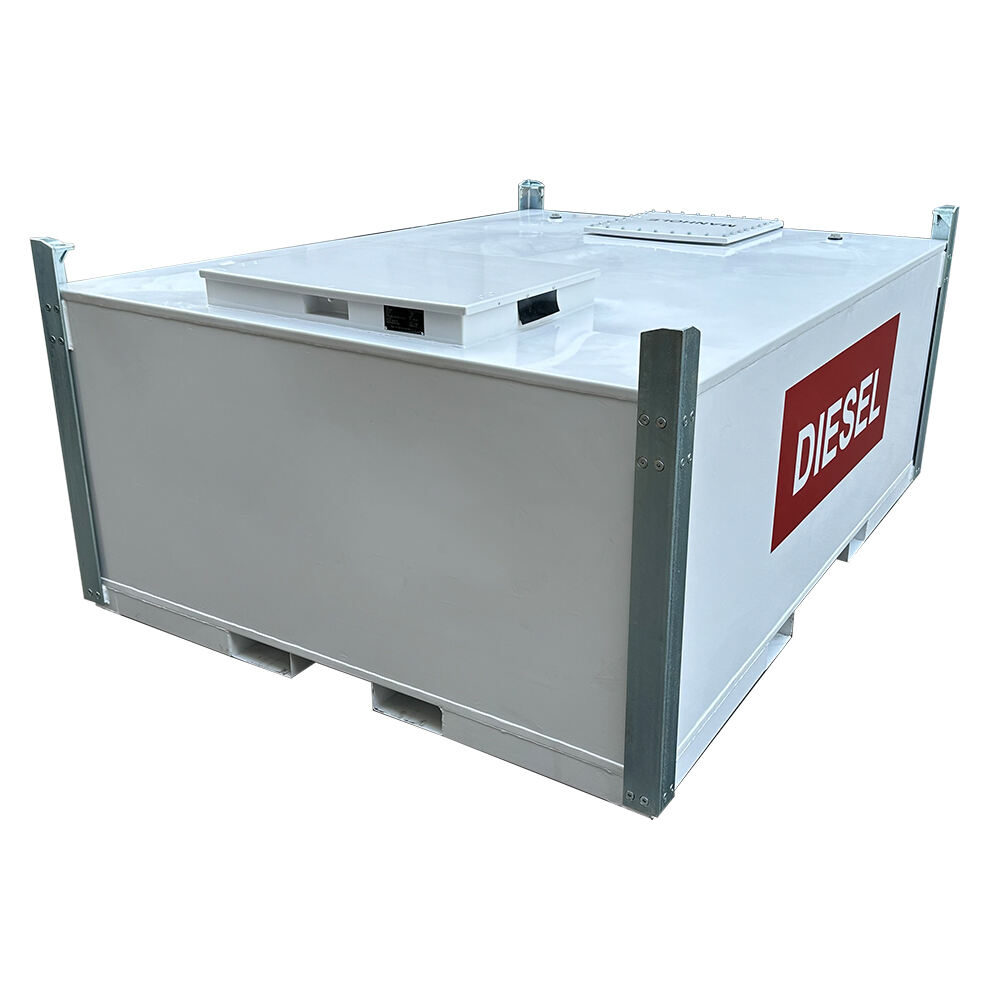
Recommended Products
Hot News
-
Double wall portable diesel gasoline cube tank with pump sale for Mauritius
2024-11-11
-
Double Walled Portable Fuel TransferCube Tank Ship To Spain
2024-11-07
-
Shipping of portable aviation fuel tank with pump
2024-10-12
-
Carbon steel diesel fuel cube tank ship to USA
2024-11-14
-
Carbon steel cube tank with pump
2024-11-13
-
Fuel Transfer Tank Cube Stationary Double Walled Diesel Storage Tank Sale For Spain
2024-11-06
-
251 US Gallon 552 Gallon Fuel Cube Transfer Tank Sale For USA
2024-11-05
-
251-2000 Gallon Fuel Cube Transfer Tank Sale For Grenada
2024-11-01
-
552 Gallon portable fuel dispenser with tank sale for USA
2024-10-30
-
Mobile fuel tank with pump sale for Spain
2024-10-22
 EN
EN
 AR
AR
 BG
BG
 HR
HR
 CS
CS
 DA
DA
 NL
NL
 FI
FI
 FR
FR
 DE
DE
 EL
EL
 IT
IT
 JA
JA
 KO
KO
 NO
NO
 PL
PL
 PT
PT
 RO
RO
 RU
RU
 ES
ES
 SV
SV
 TL
TL
 ID
ID
 LT
LT
 SR
SR
 SK
SK
 SL
SL
 UK
UK
 VI
VI
 HU
HU
 TH
TH
 TR
TR
 MS
MS
 GA
GA
 IS
IS
 KA
KA
 HT
HT
 KK
KK
 UZ
UZ


